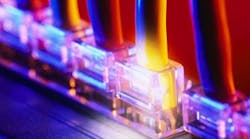The good news is that once you get the physical problems resolved, typically during commissioning and startup, the system should run with minimal disruption until something is changed.
As with any installation, the potential for problems can begin with the design itself, so follow good engineering practices such as proper tray and cable spacing as described in IEC 61000-5-2:1997, Electromagnetic Compatibility (EMC), Part 5: Installation and Mitigation Guidelines. Section 2, Earthing (Grounding in North America) and Cabling, provides guidance by assigning classes to different types of cables based on the energy levels they contain, and recommending spacing to prevent noise in one system affecting others.
All twisted-pair field cable, whether used for HART or another bus, at a minimum, should be individually shielded, twisted-pair. The HART Communications Foundation has this as a base recommendation, as do all the digital process buses. Twisting and shielding provide protection against EMI and RFI; however, this protection can be lost by installing cable with a bend radius tighter than the manufacturer’s specified minimum. Bending cable too tightly can cause the twists to separate, reducing EMI protection. In fiber, it introduces stresses in the cable, affecting the refractive index.
The next step is to be sure the cable is terminated correctly. This starts by selecting the right type of terminal and connector. There are a number of options, though the most common termination is still the screw terminal. However, when using screw terminals, be sure they are tightened correctly; the best way to do that is with a torque screwdriver. My experience and that of other Foundation fieldbus instructors in the controlled setting of a classroom or panel shop is that at least 25% of terminals are not at the proper torque. In many cases, I have found 100% failure rates. Unfortunately, this is very hard to check when troubleshooting, or often is overlooked as a possible cause. The consequence of improper torque is that in the presence of vibration the connection likely will loosen over time.
[pullquote]For wired Ethernet, especially RJ45 connections, the weakest links are the fingers used to make the female side of the connection. These thin wires act as both conductor and contact spring to the male jack. The majority of the force to make this connection comes from a fragile plastic lever on the reverse side of the male component. All of us have had at least one occasion in which the plastic connector has broken and caused intermittent network connectivity. Fortunately, many manufacturers now make connectors with more rugged jacks that include metal levers/springs to provide better contact, even in industrial vibration conditions.
Wireless or frequency communications have several challenges that need to be verified — not just once via a walkthrough site survey, but over time to accommodate changes in the operating plant such as vehicular traffic, weather conditions, and the turning on and off of paralleled equipment. With the increased reliance on the 2.4 GHz band for so many different technologies, facilities will have to start managing spectrum to control congestion within their facility boundaries to ensure that someone’s cell phone does not cause a dropped control node.
Now that you have the medium to transmit the signal, you also require the power to make everything work. In most cases, isolated power is the better way since, as the name implies, the output power is isolated from the source, so there is a level of separation between the two parts of the equipment. Though not perfect, it does help reduce the transmission of noise. This is becoming ever-more important with the increasing use of electronic signal conditioners that generate a signal as a series of sine waves or digital step changes.
If you want to easily check the effect of noise on a network, take measurements of your system with and without your laptop connected to the ac power. PC power supplies are very noisy, so if you use them to capture baseline plant data or troubleshoot a small disturbance, be sure to run on battery.




